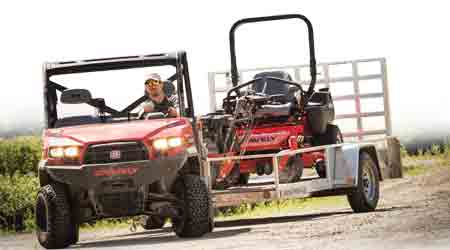Utility Vehicles: Proper Inspections and Maintenance Help Deliver Performance
Part one of a four-part article on utility vehicle maintenance
Utility vehicles have become the workhorses of grounds departments in many institutional and commercial facilities. But departments will only see the vehicles’ benefits related to performance, versatility and reliability if mechanics and operators perform regular inspections and maintenance.
By better understanding the importance of utility vehicle inspection and maintenance practices, managers will be able to realize these benefits through long-term vehicle performance.
Prior to purchase
Before technicians and operators can properly maintain utility vehicles, managers need to assess their current pieces of equipment to see if they are the most reliable and durable options for their landscape’s location and terrain. To accomplish this, technicians need to perform an equipment audit to evaluate the condition of current vehicles and determine if they are performing at an appropriate level to handle the department’s landscaping needs.
If a manager decides it is time to replace a vehicle, the next step is to consider several factors before they make a purchase decision.
Needs. Establish specific vehicle requirements, daily activities, and budgets in order to better equip their staffs and increase efficiency. The size of the landscape and its topography are key elements.
Range. Make sure a particular piece of equipment will be able to service the entire area for which the department is responsible.
Environment. Consider the type of weather the location experiences because this can affect a vehicle’s performance life.
Durability. Managers also need to review the vehicle’s durability and the type of warranty the manufacturer provides because these items are key indicators of the type of investment the department is making.
Fuel. The type of fuel the vehicle requires also indicates its probable durability and upkeep. While gasoline-powered vehicles still dominate the market, alternative fuels have gained momentum as more managers embrace green initiatives. Green products not only are more environmentally friendly. They also increase the efficiency of utility vehicles and extend their shelf lives. Three popular alternative fuel sources — electricity, propane, and bio-diesel — contribute to a lower risk for mechanical malfunctions, so concerns about performance and maintenance issues decrease as a result.
Related Topics:















